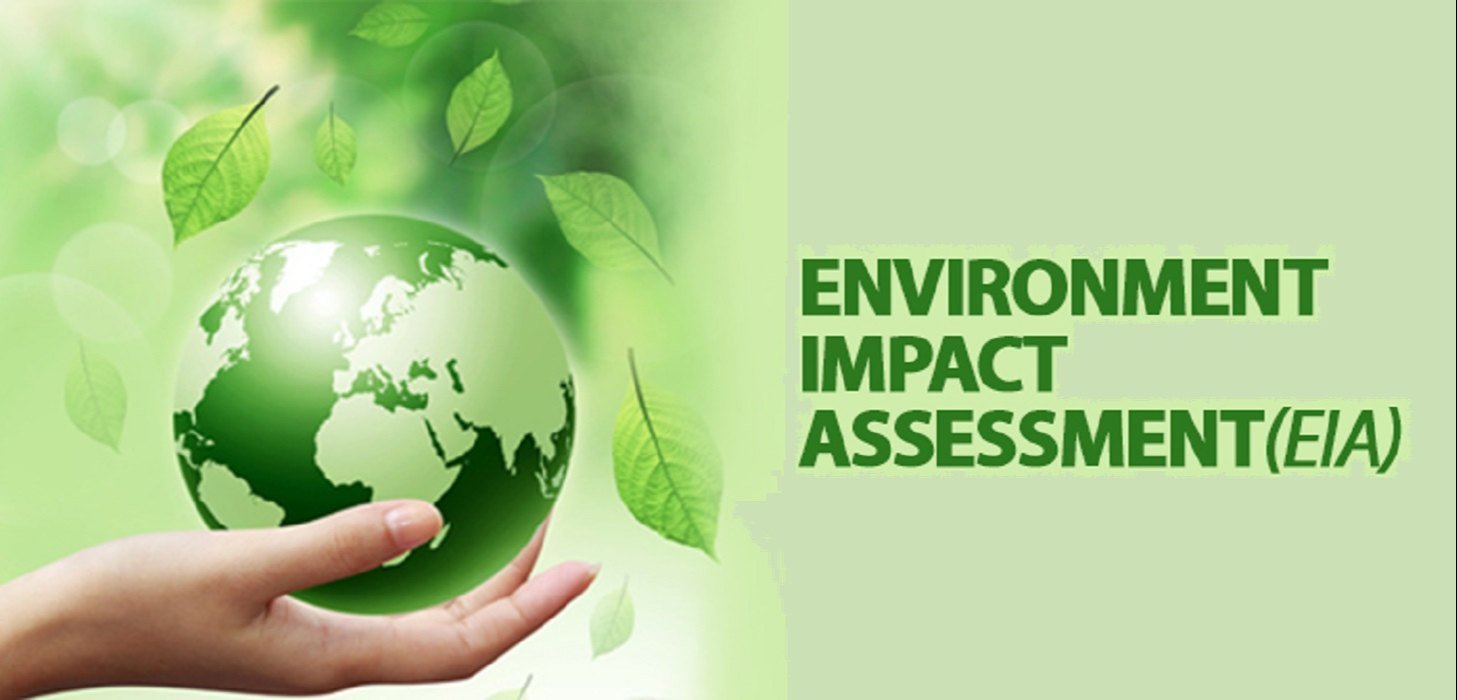A Beginner’s Guide to Environmental Impact Assessment (EIA)

Environmental Impact Assessment (EIA) is a crucial aspect of decision-making in civil engineering and environmental management, as it aims to identify and minimize potential negative effects of proposed projects on the environment. This process follows guidelines set by EIA regulations and consists of several essential stages, from initial screening to final decision-making, while also adhering to legal frameworks and international standards. Familiarizing oneself with these key components is important for successfully navigating the complexities of the EIA process and seeking ways to promote sustainability in the future.
The Process of EIA and Its Primary Phases
The Environmental Impact Assessment (EIA) process is carefully designed to guarantee that all potential environmental impacts of a project are thoroughly evaluated before any decisions are made. Here is a breakdown of its primary phases:
- Screening:
-
- Purpose: Determines the necessity of an EIA for the project.
-
- Activities Involved: Assessing project size, location, and potential environmental effects to decide if a full EIA is required.
- Scoping:
-
- Purpose: Identifies the key environmental issues and sets the boundaries for the studies to be conducted.
-
- Activities Involved: Consulting with stakeholders, defining the scope of the assessment, and preparing terms of reference.
- Preparation of the EIA Report:
-
- Purpose: Documents the anticipated environmental impacts and proposed mitigation measures.
-
- Activities Involved: Detailed analysis of environmental baseline, impact predictions, assessment of alternatives, and formulation of mitigation strategies.
- Consultation and Participation:
-
- Purpose: Engages the public and other stakeholders to enhance the decision-making process.
-
- Activities Involved: Public notices, hearings, and review periods allowing for input and objections to be raised and considered.
- Decision Making:
-
- Purpose: Concludes the assessment process by either approving, modifying, or rejecting the project based on the EIA report and public input.
-
- Activities Involved: Government or relevant authority reviews the EIA report, public comments, and ensures compliance with environmental standards before issuing a decision.
Every stage in this process is essential and relies on the preceding steps to ensure a thorough examination of all environmental components. This methodical approach not only helps mitigate potential negative impacts but also facilitates sustainable development and project planning.
EIA regulations are subject to a complex web of legal frameworks and international standards, aimed at evaluating all potential adverse environmental effects before any activities commence. These frameworks differ greatly among countries and industries, taking into account various environmental, social, and economic factors.
- Global and Regional EIA Directives:
-
- European Union (EU): The EIA Directive (2011/92/EU as amended by 2014/52/EU) mandates assessment for major projects, detailing procedures for public participation and decision transparency.
-
- United States: The National Environmental Policy Act (NEPA) of 1969 pioneered formal EIA processes, influencing global practices.
-
- Emerging Economies: Countries like India and Egypt have integrated EIA into their national environmental policy frameworks, overseen by specific governmental bodies such as India’s Ministry of Environment, Forests and Climate Change and Egypt’s Environmental Affairs Agency.
- Sector-Specific and National EIA Applications:
-
- Mining Industry: EIAs are crucial for decision-making, ensuring that environmental, social, and health costs are factored into project evaluations.
-
- Infrastructure Projects: In countries like India, EIAs are mandatory for all major infrastructure projects to mitigate negative environmental and community impacts.
- Principles and Methodologies:
-
- Precautionary and Polluter Pays Principles: Applied to determine project modifications, rejections, or requirements for liability coverage based on potential environmental harms.
-
- Hydropower Sustainability Assessment Protocol: A sector-specific methodology to evaluate the quality of environmental and social assessments.
These legal requirements and standards are not only essential for protecting the environment but also for ensuring that communities have a voice in the development processes that affect their lives and surroundings.
Despite the vital role that Environmental Impact Assessments (EIAs) play in promoting sustainable development, there are several challenges that hinder their effectiveness:
Limitations in Data and Analysis:
- Difficulty in Quantifying Impacts: Many environmental impacts are challenging to quantify accurately, making it difficult to estimate impact indicators.
- Insufficient Data: Availability of data can vary significantly, affecting the reliability of EIAs, particularly for complex projects like renewable energy installations.
- Use of Approximate Methods: In cases where precise data is lacking, techniques like fuzzy logic may be used to estimate impacts. However, these methods can introduce uncertainties into the assessments.
Challenges in Process and Implementation:
- Complexity and Accessibility: The EIA process is often seen as overly complicated, leading to disengagement from the public and decision-makers who struggle to navigate the system effectively.
- Inconsistent Approaches: Using different indicators and datasets can lead to inconsistent assessments, which affects the credibility and consistency of EIAs.
- Monitoring and Enforcement: There is a significant gap in monitoring the implementation of proposed mitigation measures, resulting in unmitigated environmental harm.
Stakeholder Engagement and Social Considerations:
- Difficulties in Engagement: Meaningful stakeholder participation is crucial but challenging due to conflicts of interest, communication barriers, and participation fatigue.
- Neglecting Social Impacts: Many EIAs do not thoroughly analyze social impacts such as displacement or changes in local economies, resulting in overlooked community grievances and conflicts.
- Deficiencies in Expertise: The lack of in-house expertise on environmental assessments undermines the quality and depth of analysis.
These challenges highlight the need for continual improvement in EIA methodologies, stakeholder engagement processes, and regulatory frameworks to enhance the effectiveness and reliability of environmental impact assessments.
EIA Innovations and Future Directions
Innovative technologies and methodologies are reshaping the landscape of Environmental Impact Assessments (EIAs), enhancing both efficiency and effectiveness. Notable advancements include:
- Digital Engagement Tools:
-
- Online Platforms: Tools like EngagePhase and Bang the Table facilitate broader stakeholder and public involvement by simplifying communication, reducing costs, and broadening access to information.
- Advanced Mapping and Data Collection:
-
- Geographic Information Systems (GIS) and Drones: These technologies are crucial for precise data gathering, analysis, and visualization of environmental and social impacts, offering a more detailed understanding of potential effects.
- Participatory and Adaptive Approaches:
-
- Deliberative Methods: Techniques such as citizen juries and forums promote informed discussions on complex EIA topics, ensuring diverse viewpoints are considered.
-
- Adaptive Management: This iterative approach focuses on learning from outcomes to refine and improve EIA processes continually.
Future directions emphasize a holistic and integrated approach to EIAs:
- Transdisciplinary Integration: Combining various disciplines and knowledge forms addresses the multifaceted challenges in EIAs, leading to more comprehensive assessments.
- Focus on Sustainable Outcomes: Aligning EIAs with broader sustainability goals, including effective practice and integration of the Sustainable Development Goals (SDGs), is critical for future developments.
- Cultural and Regional Considerations: The adaptation of EIA practices to fit cultural contexts, particularly in East and Southeast Asia, highlights the importance of localized strategies to enhance public participation and policy integration.
These innovations and strategies signify a progressive shift towards more dynamic and inclusive environmental impact assessments, ensuring that EIAs not only comply with regulatory frameworks but also contribute effectively to sustainable development.
Conclusion
Throughout the exploration of Environmental Impact Assessments (EIAs), we’ve delved into the intricate process from its key stages and legal frameworks to the challenges and future directions that await. The discussion highlights the indispensable role of EIAs in integrating environmental considerations into project planning and execution, ensuring that potential adverse effects are meticulously analyzed and mitigated. By underscoring the significance of each stage in the EIA process and the adherence to a complex array of legal standards, the article encapsulates the vital aspects that underpin the effectiveness and reliability of EIAs in promoting sustainable development.
Looking forward, the evolution of EIA methodologies, enhanced stakeholder engagement, and the incorporation of innovative technologies are set to redefine the landscape of environmental impact assessments. These advancements promise a more informed, participatory, and effective approach to environmental management, aligning closely with the ultimate goal of achieving sustainability in development projects. As we navigate the challenges and embrace the innovations, the continuous improvement and adaptation of the EIA process will be paramount in ensuring that the environmental integrity and societal well-being are preserved for future generations, reflecting a collective commitment to a more sustainable world.





